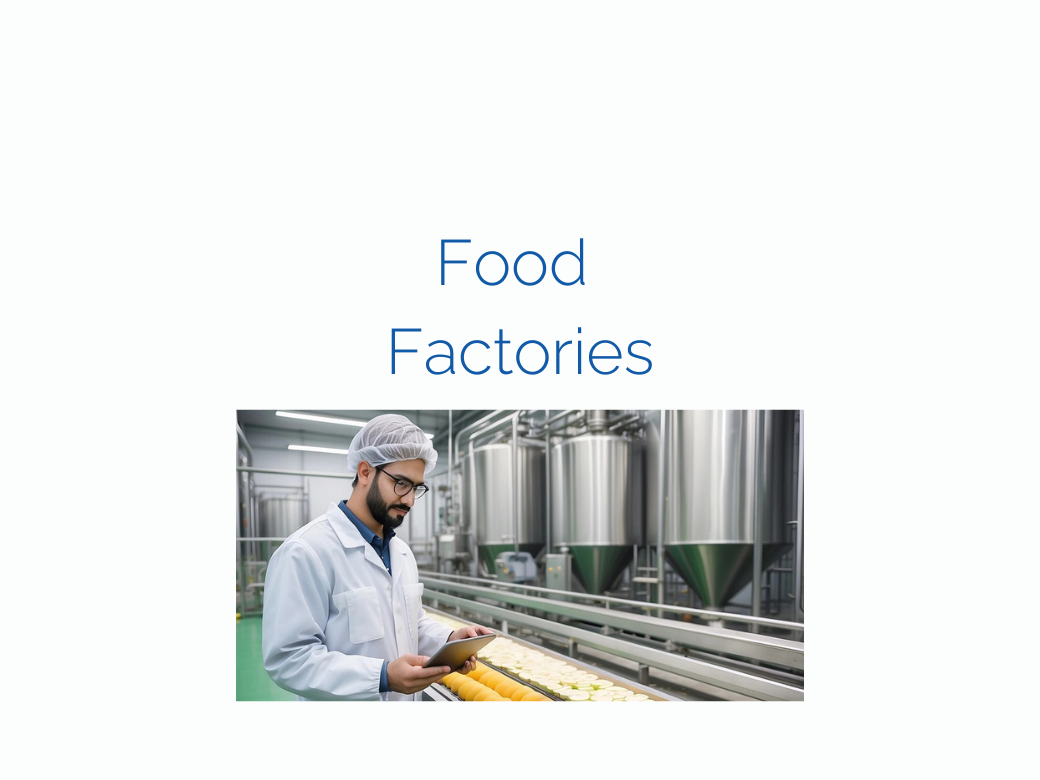
Discover how food factories operate, key processes, emerging technologies, and specialized pumping solutions to optimize production.
Food factories are the core of the food industry, responsible for transforming raw materials into safe, ready-to-consume products. In an increasingly competitive market, operational efficiency, food safety, and technological innovation are critical success factors.
In this article, we will explore:
-
The fundamental processes in a food factory
-
Emerging technologies revolutionizing the sector
-
Operational challenges and how specialized solutions, such as those from Q-Pumps, can optimize production
1. What is a Food Factory and Why is it Important?
A food factory is an industrial facility designed to process, package, and distribute food products. These plants must comply with strict hygiene and safety regulations to ensure food quality.
1.1 Types of Food Factories
-
Meat and dairy processors (e.g., sausage plants, cheese factories)
-
Canning and preserving facilities (e.g., vegetables, canned fruits)
-
Bakery and snack factories (e.g., cookies, cereals)
-
Beverage and juice plants (e.g., soft drinks, pasteurized juices)
2. Key Processes in a Food Factory
2.1 Raw Material Reception and Storage
Before production begins, food factories must ensure raw materials meet quality standards. This includes:
-
Temperature control (for perishable products like dairy or meat).
-
Microbiological analysis (to prevent contamination).
-
Hygienic pumping systems for liquid transport (e.g., milk, juices).
Q-Pumps’ sanitary pumps ensure safe fluid handling, reducing contamination risks.
2.2 Processing and Transformation
Depending on the product, factories use different methods:
-
Pasteurization (for dairy and juices).
-
Sterilization (for canned foods).
-
Mixing and homogenization (for sauces and viscous products).
Key technologies:
-
Positive displacement pumps for thick products.
-
CIP (Clean-in-Place) systems to maintain hygiene.
2.3 Packaging
Packaging not only protects food but also extends shelf life. Common techniques include:
-
Vacuum packaging (for meats and cheeses).
-
Modified atmosphere packaging (for fresh products).
-
Aseptic filling (for beverages and liquids).
2.4 Quality Control and Food Safety
Food factories must follow strict regulations:
-
HACCP (Hazard Analysis and Critical Control Points).
-
ISO 22000 (Food Safety Management).
-
FDA and EHEDG certifications for equipment.
3. Technologies Transforming Food Factories
3.1 Automation and Robotics
Advanced technologies are revolutionizing production:
-
Robotic arms for packaging and palletizing.
-
Machine vision systems for quality inspection.
-
Smart pumps with automated flow and pressure control.
3.2 Artificial Intelligence and Big Data
Food factories are using AI to:
-
Predict demand and optimize inventories.
-
Detect anomalies in production lines.
-
Reduce waste through predictive analytics.
3.3 Sustainability and Waste Reduction
Key sustainability trends:
-
High-efficiency pumps (up to 30% energy savings).
-
Water recycling systems in cleaning processes.
-
Eco-friendly packaging materials.
4. Challenges in Food Factory Operations
| Challenge | Solution with Q-Pumps |
|---|---|
| Cross-contamination | Sanitary pumps with hygienic design |
| High energy costs | High-efficiency motors |
| Regulatory compliance | FDA/EHEDG-certified equipment |
| Lack of automation | Smart pumping systems |
5. The Future of Food Factories
The sector is moving toward:
-
Blockchain traceability for greater transparency.
-
Mass customization (food tailored to specific needs).
-
Alternative proteins (e.g., lab-grown meat).
Food factories that adopt these technologies will gain a key competitive advantage.
Conclusion
Food factories must combine efficient processes, innovative technologies, and specialized solutions to remain competitive. Companies like Q-Pumps provide equipment and technical expertise to optimize production, reduce costs, and ensure food safety.
| Request a Free Consultation |